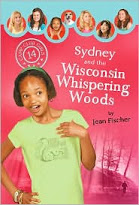Successful writers don’t just read award-winning books; they study them to learn the craft of first-rate writing. If you write for children, then you probably look to the Newbery Medal winners as examples of excellence.
The Newbery Medal
 The Newbery Medal is a coveted award “given to the author of the most distinguished contribution to American literature for children published by an American publisher in the United States in English.” The Association for Library Service to Children, a division of the American Library Association, presents this annual award each January. Winners are chosen by a committee made up of 15 members; seven of them and the chairperson are elected by members of the ALSC, and the remaining seven are appointed by the chairperson with the goal of “geographic background and diversity.”
The Newbery Medal is a coveted award “given to the author of the most distinguished contribution to American literature for children published by an American publisher in the United States in English.” The Association for Library Service to Children, a division of the American Library Association, presents this annual award each January. Winners are chosen by a committee made up of 15 members; seven of them and the chairperson are elected by members of the ALSC, and the remaining seven are appointed by the chairperson with the goal of “geographic background and diversity.”Criteria Used by the Newbery Committee
The Newbery Committee follows strict criteria for choosing the winning book. The most recent criteria was adopted by the ALSC board in 2008:
1. In identifying “distinguished contribution to American literature,” defined as text, in a book for children,
1. In identifying “distinguished contribution to American literature,” defined as text, in a book for children,
a. Committee members need to consider the following:
- Interpretation of the theme or concept
- Presentation of information including accuracy, clarity, and organization
- Development of a plot
- Delineation of characters
- Delineation of a setting
- Appropriateness of style.
Note: Because the literary qualities to be considered will vary depending on content, the committee need not expect to find excellence in each of the named elements. The book should, however, have distinguished qualities in all of the elements pertinent to it.
b. Committee members must consider excellence of presentation for a child audience.
2. Each book is to be considered as a contribution to American literature. The committee is to make its decision primarily on the text. Other components of a book, such as illustrations, overall design of the book, etc., may be considered when they make the book less effective.
3. The book must be a self-contained entity, not dependent on other media (i.e., sound or film equipment) for its enjoyment.
Note: The committee should keep in mind that the award is for literary quality and quality presentation for children. The award is not for didactic content or popularity.
3. The book must be a self-contained entity, not dependent on other media (i.e., sound or film equipment) for its enjoyment.
Note: The committee should keep in mind that the award is for literary quality and quality presentation for children. The award is not for didactic content or popularity.
Two Ways to Use the Newbery Committee Criteria to Improve Your Writing
The American short story writer Cynthia Ozick said,” I read in order to write. I read out of obsession with writing. . . .I read in order to find out what I need to know: to illuminate the riddle.” In other words, good writing is more than just talent. It is also learning about and practicing the craft of writing.
Try these two skill-building exercises using Newbery Award winning books.
1. Choose and read a Newbery Medal book. You can find a list by clicking here. As you read the book, consider the Newbery Committee criteria. Think of yourself as a committee member, and jot down notes about what makes the book great and worthy of receiving the award. Think especially about criteria item 1a.
2. Critique one of your own writing projects using the Newbery Committee criteria. How does it measure up? Based on what you’ve learned, what can you do to improve your writing?
Are you interested in learning about the history of the Newbery Medal? Visit The Association for Library Service to Children web page.
Read what Rebecca Stead said about winning the 2010 Newbery Medal in this Publisher's Weekly article.
2. Critique one of your own writing projects using the Newbery Committee criteria. How does it measure up? Based on what you’ve learned, what can you do to improve your writing?
Are you interested in learning about the history of the Newbery Medal? Visit The Association for Library Service to Children web page.
Read what Rebecca Stead said about winning the 2010 Newbery Medal in this Publisher's Weekly article.
Disclosure of Material Connection: I have not received any compensation for writing this post. I have no material connection to the brands, products, or services that I have mentioned. I am disclosing this in accordance with the Federal Trade Commission’s 16 CFR, Part 255: “Guides Concerning the Use of Endorsements and Testimonials in Advertising.”














0 comments:
Post a Comment